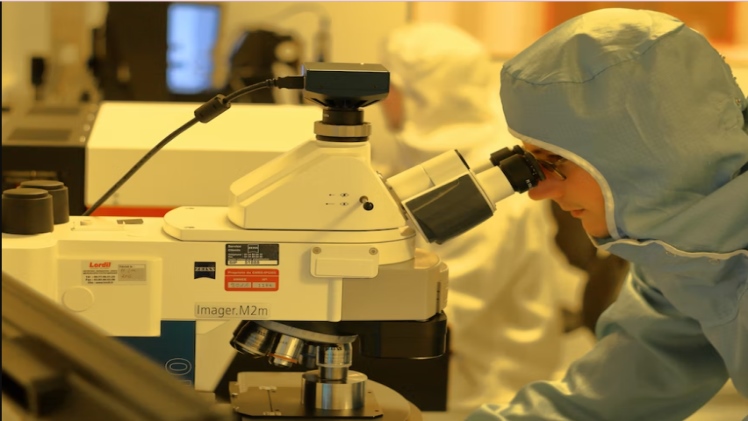Cleanrooms are defined as a controlled environment that helps to prevent contamination of the parts being manufactured. Cleanrooms are a necessary environment for many manufacturing operations. They’re used to produce products that can’t be compromised by particulate contamination or any other type of contaminant.
Cleanrooms are used in manufacturing and research, and they’re also found in hospitals and pharmaceutical facilities. Cleanrooms use HEPA filters to filter out particulates, which can cause defects in your product or damage its quality. These filters help maintain negative air pressure inside the work area so that no dirt gets in.
Maintaining a cleanroom is an expensive task. Globally, the industry of cleanroom consumables, which used to be worth USD 2.6 billion in 2020, is predicted by experts at Analytics Market Research to touch USD 3.4 billion by 2027, growing at a CAGR of 4.3% in the timeline of 2022-27.
Cleanrooms have strict standards that must be adhered to at all times, but even so, there are still challenges that can arise with maintaining them. We have listed five common issues so you can plan your cleanroom maintenance accordingly.
1. Electro-Static Discharge or ESD
Static electricity is a serious problem in cleanrooms. Static electricity occurs when two materials with different electrical charges are brought into contact with each other and then separated. To know more about how you can take care of ESD damage in your cleanroom, consult online resources on ESD in cleanrooms and how to combat the same.
Unfortunately, static electricity can occur anywhere in your cleanroom environment. It can be caused by walking across carpeted floors or touching metal objects such as light fixtures or doors. Even raising your arms while working at a workstation can generate enough voltage to cause damage. In order to prevent these problems from occurring, follow the following steps in your cleanroom.
- Use conductive shoes
- Keep all metal objects grounded
- Use anti-static mats inside your clean room
2. Particulate Contamination
Particulate contamination can be a real issue if not addressed properly. If the particulates are not removed, they can cause damage to equipment and products. They also have the potential to travel through your cleanroom by air currents and spread throughout the entire facility.
Particulate contamination comes from two sources, manufacturing processes or environmental sources outside of your facility like dust storms. In either case, filtration systems will help remove these particles from the air so that they do not reach their intended destination in an undamaged form.
The flooring of your cleanroom is also significant here, as the wrong material will hold onto dirt and create contamination. The market for cleanroom flooring alone will reach USD 4.3 billion in 2033, at a projected CAGR of 6.5% between 2023-33, reports Future Market Insights.
3. Downtime Caused by Equipment Failure
You would want to avoid downtime at all costs. In fact, when it comes to maintaining cleanrooms, it can be the difference between success and failure.
Aside from the increased cost of labor and lost productivity, it also impacts quality control. If you fail to meet product specifications for any given period of time, your reputation will suffer.
To avoid downtime caused by equipment failure, ensure the following.
- Inform your supplier what parts are needed in advance, in case there is a need for an urgent replacement
- Ensure proper maintenance schedules are followed
- Have backup systems ready in case something goes awry during routine operations like a bad sensor reading
4. Sensitivity to Temperature and Humidity Fluctuations
The products that are produced in cleanrooms are sensitive to temperature and humidity fluctuations. This can cause issues for both the environment and your company’s bottom line.
To ensure your cleanroom is operating at its best, you will need to monitor it closely. This means making sure there is a constant supply of airflow, keeping track of any changes in the environment, and monitoring the performance of equipment such as dehumidifiers or air handlers.
5. Danger of Compromising on Product Quality
With many of today’s manufacturing operations, there is zero room for mistakes or variations in product quality. This can be a major challenge when it comes to maintaining cleanrooms. The entire goal of these facilities is to keep contaminants out and ensure that only pure materials are used during production.
When something does go wrong, it has the potential to cause thousands of dollars worth of damage and even put lives at risk if people become sick from using contaminated products.
Make sure all employees are trained on how to use the various pieces of equipment necessary for working on your sites like gloves and masks. Train employees on proper cleaning procedures so they know how best to handle items like mops and brooms prior to their entering another area where contamination could occur.
Your training and auditing methods should be compliant with ANSI/ESD S20.20 and IEC 61340-5-1 requirements, as mentioned on the ESD Association website.
It’s important that you take steps now so you don’t face any issues down the road. Cleanrooms are constantly having to face challenges and find solutions. Maintaining a cleanroom can be challenging. You need to keep it sanitary at all times while still allowing people access, and you need to ensure that items don’t become contaminated when they enter or exit your facility.
The cleanroom industry is always evolving. While some of the challenges are universal, others are specific to a single location or group of people. That is why it is so important to understand your own needs and goals before making any decisions about what type of technology would work best for you.

